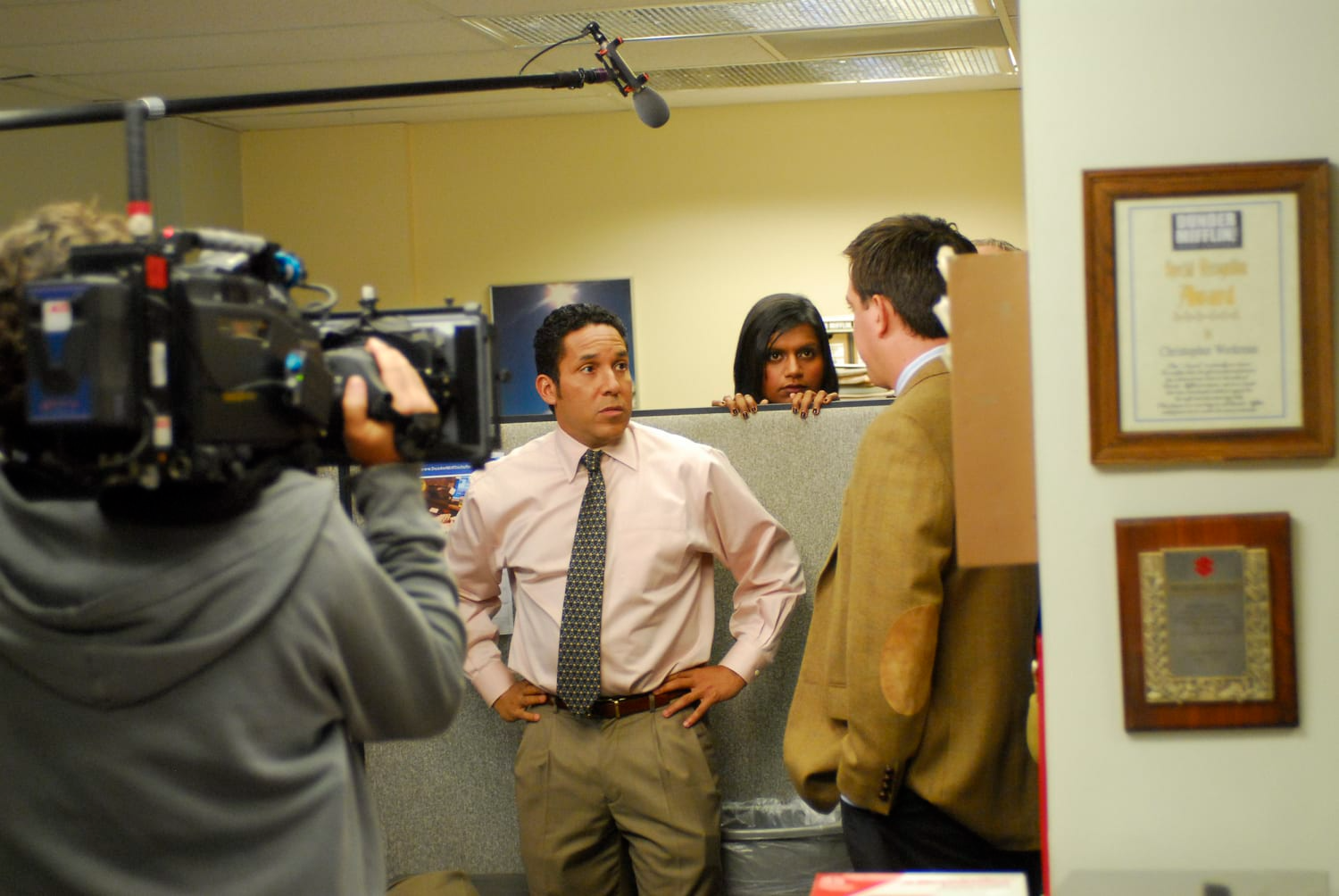
The Office is not just a typical office sitcom, but also a masterpiece of the mockumentary genre. Here is a deeper analysis of how the show was made, the elements that made it successful, and interesting behind-the-scenes stories.
1. Mockumentary Filming Style – The Key to Success
Unlike a typical sitcom, The Office uses a mockumentary style—the characters speak directly to the camera, and the camera follows them as if filming a real documentary.
Why does this style work?
Increases authenticity: Because there is no laugh track, viewers feel like they are witnessing the real lives of Dunder Mifflin employees.
Creates cringe comedy: The camera often captures natural expressions, especially Jim’s when looking at the camera in awkward situations.
More Subtle Acting: Actors must express their emotions more realistically because the camera “accidentally” records every moment.
Behind the scenes: To increase authenticity, director Greg Daniels asked the cast to learn how to use office computers and even do their own desk work during the early days of filming. Their computers were also connected to the real Internet to create a natural feeling when working.
2. Acting and Improvisation – When the Script Is Just a Guide
Although the film has a full script, the actors have the space to improvise, creating classic moments.
Memorable improv scenes:
Michael Scott kisses Oscar (Gay Witch Hunt)
Steve Carell did not tell Oscar Nunez in advance that he was going to kiss him, creating a real shocked reaction from the entire cast.
Jim pretends to be Dwight (Product Recall)
The line “Bears. Beets. Battlestar Galactica” was entirely added by Rainn Wilson and John Krasinski, and it has become one of the most famous quotes in the series.
Kevin spills the chili pot (Casual Friday)
This was a one-take scene, because the floor would be too dirty to reshoot. Brian Baumgartner had to practice how to spill it naturally.
Behind the scenes: Director Greg Daniels has said that he encourages actors to go through the script but not necessarily say it word for word, because the randomness in how they interact creates spontaneity.
3. Untold Stories From Filming
John Krasinski Almost Lost the Role of Jim
Before his audition, John Krasinski sat in the waiting room and talked to someone sitting nearby about his fear that The Office (US) might not be as good as the British version. He didn’t know that the person sitting nearby was the producer! Luckily, he still got the audition and played Jim perfectly.
Jenna Fischer keeps mementos from the show
After the show ended, Jenna Fischer (Pam) kept the painting of the Dunder Mifflin building that Pam painted in the show, as a special memory.
Steve Carell leaves in tears
When Steve Carell left the show in season 7, the scene where Pam runs out to hug Michael Scott goodbye at the airport was not in the script. Jenna Fischer ran out and hugged Carell, which moved the whole crew.
4. Small Details That Create the Connection of the Show
The Schrute Farms menu (in the episode Money) was actually written and readable on screen.
The phone number on the Dunder Mifflin business card actually worked and played a voice message welcoming fans.
The last names of Angela Martin (Angela Kinsey) and Phyllis Vance (Phyllis Smith) were taken from the actors’ real names.
5. Behind-the-scenes Culture – Real-Life Friendships
Unlike many other TV shows, The Office cast is actually close in real life.
John Krasinski and Jenna Fischer had a relationship as close as Jim and Pam.
Fischer once said: “John is my Jim in real life, but in a friend way.”
Creed Bratton actually played in a rock band.
On the show, Creed has an ambiguous musical past – in real life, he was a member of the 1960s rock group The Grass Roots.
6. Steve Carell’s Departure – A Sad Milestone
Steve Carell left the show in season 7 because his contract ended and NBC didn’t renegotiate it properly.
The aftermath of his departure:
A sharp drop in ratings.
Subsequent seasons had to change direction, but didn’t achieve the perfection that Carell had.
Michael Scott’s finale (Goodbye, Michael) was one of the most touching episodes in sitcom history.
Behind the scenes of The Office is not only a fun story, but also shows how a sitcom can become a cultural phenomenon thanks to creativity, improvisation, and camaraderie among the cast. The use of mockumentary style, combined with realistic acting and subtle details, has helped the show maintain its long-lasting appeal.
